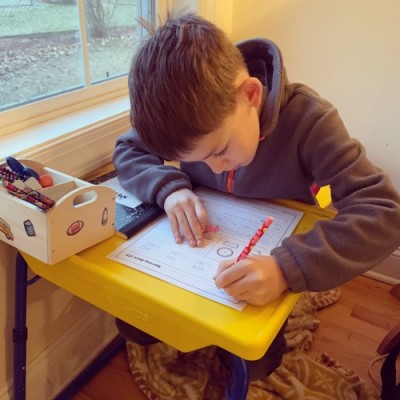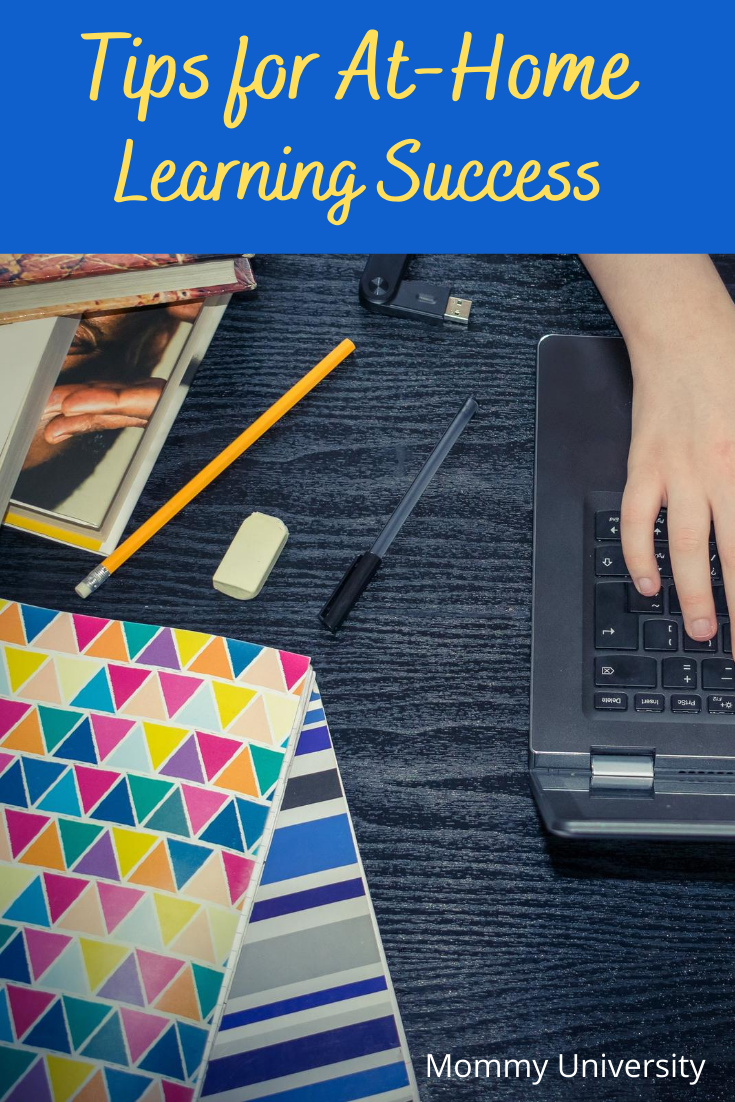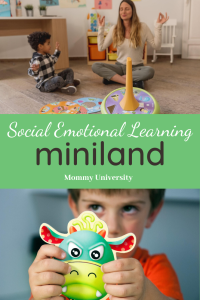This school year definitely looks different than the past! Most kids are engaging in some (if not all) distance learning. While some schools may be 100% virtual, others are offering a hybrid option (like my kids’ schools). Some parents have even opted to homeschool their children instead. Whatever the scenario, kids will be home a lot more this school year.
To help make this school year a little easier, I wanted to put together some tips to enhance academic and emotional success for kids (and parents). This list is by no means exhaustive but just some of the ideas that have worked in my house along with ideas I have seen work in the school building. As a school psychologist, I have recommended several of these ideas to teachers and parents. I have also learned a lot by watching the amazing teachers and related service providers I work with. I hope you find this list helpful.
Tips for At-Home Learning Success
Provide Structure
Kids thrive on structure which is why it is so important to maintain some form of it at home. Now, I don’t necessarily mean a rigid schedule (although that does work for some kids) but some sense of a consistency will increase success. In March, I developed a great schedule but threw it out within a week. I learned that a flexible schedule worked best for my kids. This year, create a schedule based on what the teacher is offering virtually. Then tweak it as needed. For example, teacher Google Meets are set in stone while maybe outdoor play or silent reading can be moved around based on need, weather or even behavior. Whatever you decide, I definitely recommend typing or writing it up as a visual reminder for the kids.
Reduce Distractions in Child’s Work Space
 I know it is nearly impossible to eliminate all distractions at home but there are many things we have control over. First, try to set up your child’s work space in the quietest area of your house. Next, make sure they don’t have access to the television or video game consoles while learning. Last, remove additional distractions such as their Switch, toys, and any devices not needed for learning.
I know it is nearly impossible to eliminate all distractions at home but there are many things we have control over. First, try to set up your child’s work space in the quietest area of your house. Next, make sure they don’t have access to the television or video game consoles while learning. Last, remove additional distractions such as their Switch, toys, and any devices not needed for learning.
Let Them Be Involved
To get kids excited about at home learning, let them be involved in setting up their own work space. For example, let them set up their pencils, markers, and other supplies the way they want. You can also let them decorate their space. In the spring, I let my kids hang their art work around their desks.
Allow for Movement Breaks
Breaks are essential for academic success, especially movement breaks. Make sure kids have a chance to get up and move around throughout the day. I recommend having younger kids do GoNoodle while older kids can go outside to ride their bike or play basketball.
Use Flexible Seating
I am a BIG believer in flexible seating in school which is why I offer it to me kids at home. Although we have work stations set up, I let them choose where they want to learn. Sometimes it’s at a desk, other times it is at the kitchen table, and many times it’s lying down in their fort. We have even done work outside. If kids are comfortable, they are more likely to pay attention and absorb information.
Encourage Outdoor Play
 Getting outdoors is so important for kids. I highly recommend incorporating outdoor play into your day. You can go hiking as part of a science lesson, play baseball for gym class or draw on the driveway with chalk for art. You can also just use outdoor play as recess or a movement break.
Getting outdoors is so important for kids. I highly recommend incorporating outdoor play into your day. You can go hiking as part of a science lesson, play baseball for gym class or draw on the driveway with chalk for art. You can also just use outdoor play as recess or a movement break.
Maintain Communication with the Teacher
It is vital to maintain communication with your child’s teacher in order to support and encourage academic success. If your child is struggling, reach out immediately. They may be able to set up a private Google Meet or recommend some online support. Make sure to reach out if the work is too easy too. Teachers love offering enrichment activities!
Check Their Assignments Daily
I learned this the hard way this past spring. I had assumed my son was doing everything he was supposed to until I received emails from his Gym and Spanish teachers. After that, I made sure to check his assigned work each day. Virtual learning can be confusing, especially when teachers use different platforms which is why we need to take the time to check their assignments each day (if possible).
Help Increase Self-Regulation
While home, you WILL see your child get frustrated, upset and even angry (and not because they didn’t get a “vic” in Fortnite). In the classroom, we teach self-regulation skills. It is important for a child to understand why they are upset and then be able to take control of their own emotions. This is a very hard thing to learn for many kids, especially little ones. Some self-regulation activities include yoga, mindfulness, breathing exercises, using calming bottles, SEL games, and movement breaks.
Develop a Reward System
If you were to walk into any classroom in any elementary school, you would see a reward chart of some kind hanging up. Many times you will see multiple reward systems. To keep kids engaged and motivated, I highly recommend developing a reward system at home. This can be a simple sticker chart or a more focused behavior chart. Rewards do not have be expensive either. Many kids get excited over simple stickers and pencils. The beauty of being home, however, means you can also use video games, ice cream, or television as rewards!
Make it Fun
Learning should be fun! Okay, maybe not all the time but making it fun encourages a love of learning which, in turn, increases academic success. Add some learning games into your at home learning experience. You can also let them take fun online classes to enhance learning such as through Outschool or Varsity Tutors. Field trips (virtual or outside the home) can also add to the fun. A day at the zoo or museum can sometimes provide more learning than a day in the classroom!
 I hope these tips help make this school year fun and successful!
I hope these tips help make this school year fun and successful!
You may also enjoy these posts:












